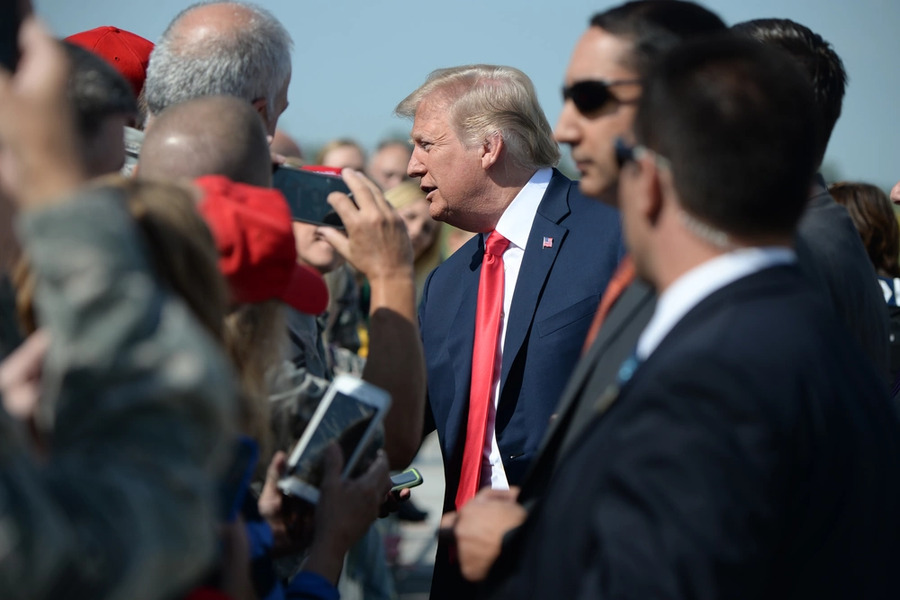FOIA Improvement Act of 2014
The FOIA Improvement Act of 2014 (S.2520) (“FIA”) sets out to make various tweaks to a key federal access to information statute, the Freedom of Information Act (“FOIA”).
Published by The Lawfare Institute
in Cooperation With

The FOIA Improvement Act of 2014 (S.2520) (“FIA”) sets out to make various tweaks to a key federal access to information statute, the Freedom of Information Act (“FOIA”). Below, I overview some of the most significant changes the bill would make, and comment on just how dramatic those would be relative to existing law and practice.
By way of summary, the bill’s marquee innovation would be to import a new balancing test into a FOIA exemption for privileged executive branch memoranda and like materials—thereby making it theoretically a bit easier for more such information to get out into the world than before. And you probably like that, if you want to make it tougher for the executive branch to withhold things like, say, Justice Department legal analyses of controversial FBI investigative powers. Additionally, and among other things, the bill would codify some more disclosure-ish values and practices the Obama Administration adopted early on in its approach to information management, call for broader storage of information in electronic rather than paper form, and add on some more fulsome transparency features.
It remains to be seen whether FIA will become law—or just how the executive branch then would implement FIA’s directives. (All this seems to be a ways off: so far, the proposal has been introduced in the Senate, but seen no other action.)
I count four significant alterations to FOIA, which FIA would make after passage by Congress and signing by the President.
Exemption Five
The first and most important adjustment concerns an exemption to FOIA, of which there are nine. FIA would leave them all in place, but condition invocation of a quite important, fifth exemption (“Exemption Five”) on the fulfillment of new and seemingly more disclosure-friendly criteria.
Currently, Exemption Five applies to “inter-agency or intra-agency memorandums or letters which would not be available by law to a party other than an agency in litigation with the agency.” The underlying idea is to protect privileged and confidential stuff, or, as the Supreme Court put it, “to exempt those documents, and only those documents that are normally privileged in the civil discovery context.” Consequently the focus has been on whether materials are covered by deliberative process or attorney-client privileges, the work product doctrine or other recognized privileges. And generally, if the answer is “yes,” then the sought materials are shielded from disclosure by Exemption Five. But the public interest in the materials isn’t part of the analysis; instead functionality—the fit between a covered privilege and the sought documents—is king.
Were it to become law, FIA would obligate the executive branch to apply Exemption Five by balancing the public interest in disclosure against the agency’s interest in protecting the records in question. In particular, if Exemption Five implicates materials protected by an attorney-client privilege, the public interest must be “compelling”—though the bill doesn’t tell us what a “compelling interest” might be. The regime is less demanding when the deliberative process privilege or attorney work-product doctrine is in play: then, the public interest in disclosure does not need to be “compelling;” presumably, the interest would merely have to exceed the private interest before being turned over. Another little variation: under FIA, Exemption Five simply doesn’t cover any inter-agency and intra-agency memos or letters that are at least 25 years old on the date of request.
All this has the makings of a big and important change from the status quo. In short, FIA would leave vastly less to the executive branch’s claims of privilege, and instead call for a balancing of the larger principles usually in play in FOIA cases—or take Exemption Five off the table entirely, when especially old records are involved (and those principles presumably need no real balancing in the first instance). Of course implementation would matter here, as in all things: a balancing analysis doesn’t necessarily promise a bonanza of new disclosure. Still, on its face the reform seems consequential, considering the executive branch’s past use of Exemption Five as a means of shielding sensitive materials.
Presumption of Openness
Secondly: FIA’s sponsor, Senator Patrick Leahy (D-Vt.), said the bill is meant to adopt a “presumption of openness” in access to records. He referred to FIA’s declaration that withholding under FOIA is only okay when an agency reasonably foresees a specific, identifiable harm to an interest protected by a FOIA exemption or other statute, or if disclosure is prohibited by other law. Conversely, it is not okay to withhold under FIA when requested documents are technically covered by one or more FOIA exemptions (but, presumably, also don’t in fact implicate interests protected by FOIA or other statutes), or simply because sought documents might be embarrassing if released. FIA also would make agencies separate out exempted from non-exempted items, and consider whether partial disclosure is possible when full disclosure is not.
FIA’s openness “presumption,” such as it is, is not new. The Office of Management and Budget (“OMB”) issued its “Open Government Directive” in December 2009 to agencies, on the specific steps the latter would take in implementing principles handed down by President Obama upon taking office. The OMB document spoke of a “presumption of openness,” and mentioned the Justice Department’s own memorandum, issued earlier in the year, regarding FOIA implementation. The Justice Department had seemed to anticipate FIA’s various provisions. Indeed, both the Justice Department document and FIA require agencies to consider partial disclosure when possible and to take reasonable steps toward segregating and releasing nonexempt information.
The presumption of openness would thus be codified rather than created anew. Of course by cementing into law something at least some of the government was doing already, FIA wouldn’t transform the facts on the ground too much—other than to ensure that the Justice Department’s openness policy is respected uniformly throughout the executive branch’s FOIA practice.
Electronic Records
FIA next seeks to get more of the federal government’s information out of paper and into electronic form. As a policy matter, the executive branch had made a priority of releasing data and information online, beginning at least as early as December 2009, with the release of the OMB’s Open Government Directive.
FIA echoes this, by requiring all agencies to make available electronically all pertinent agency documents. (Of course existence in electronic rather than physical form does not affect the disclosure and exemptions analysis.) Such documents include final opinions and orders made in cases of adjudication, policy interpretations adopted by the agency and not already published in the Federal Register, and staff manuals, among other things.
Transparency Measures
Finally, the bill comprises a number of transparency-helping reforms. By way of example, the Government Accountability Office’s (GAO) auditing requirements would expand, such that the GAO would have to identify and categorize an agency’s use of exemptions. Additionally, copies of any record that has been previously released and requested three times or more must be made available for inspection in electronic format; ditto when documents have been disclosed, and because of its subject matter, the agency thinks sought documents or substantially similar ones might be, or already have been, subject to further requests.
More adjustments made by the bill: in their FOIA compliance reporting, agencies would have to include the number of request denials and the number of records made available for public inspection. FIA also would require that agencies make their reports available to the public, with the underlying raw statistical data present. And FOIA requesters would be empowered to seek advisory opinions from the Office of Government Information Services (OGIS), the body tasked with resolving FOIA disputes as well as with reviewing FOIA procedures and compliance. This, like the above, would make for a meaningful departure from the current FOIA transparency setup.
R. Taj Moore is a graduate of Harvard Law School, where he served as an editor of the Harvard Civil Rights-Civil Liberties Law Review and Harvard National Security Journal. He was co-director of the National Security Research Committee at the law school. He has previously interned at the Department of Defense. Before law school, he worked as a Scoville Fellow at the Stimson Center. He graduated from Brown University in 2011 with an A.B. in Political Science.




